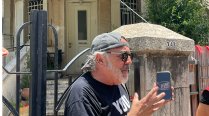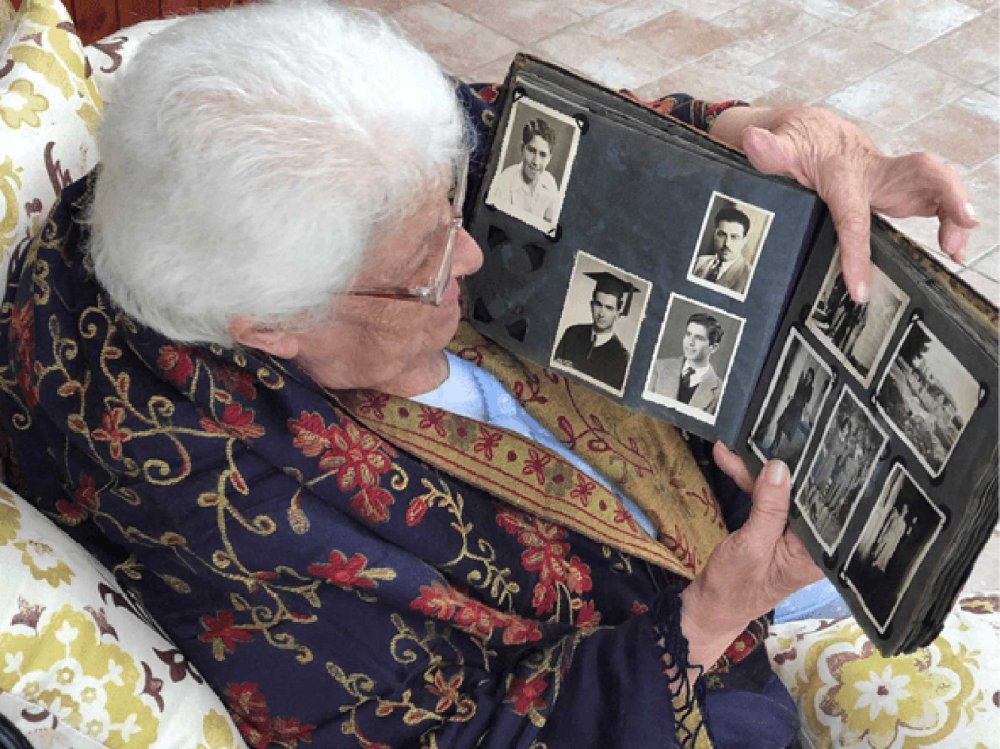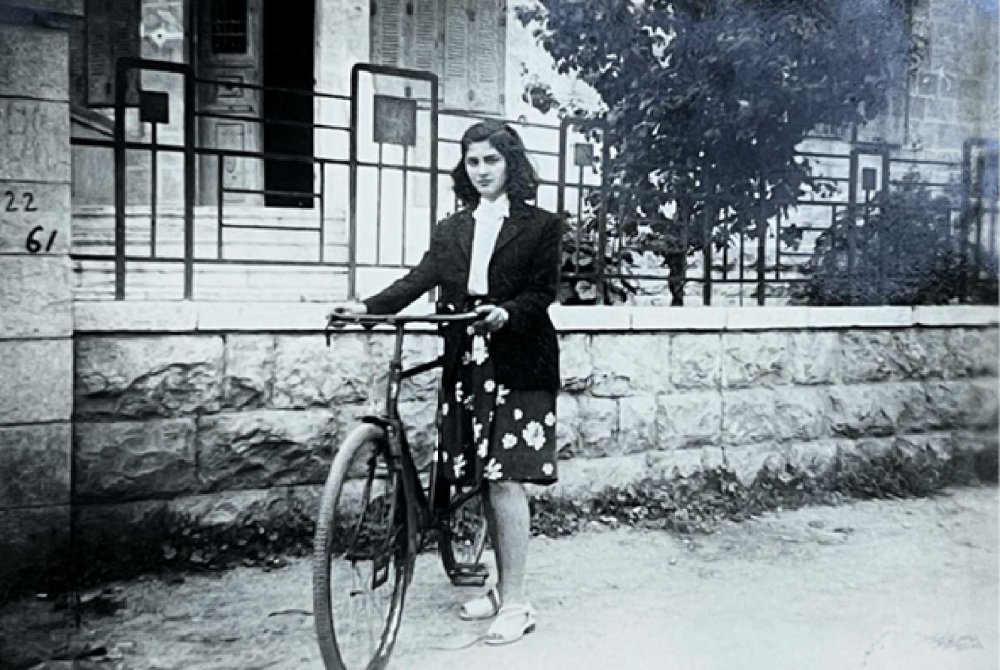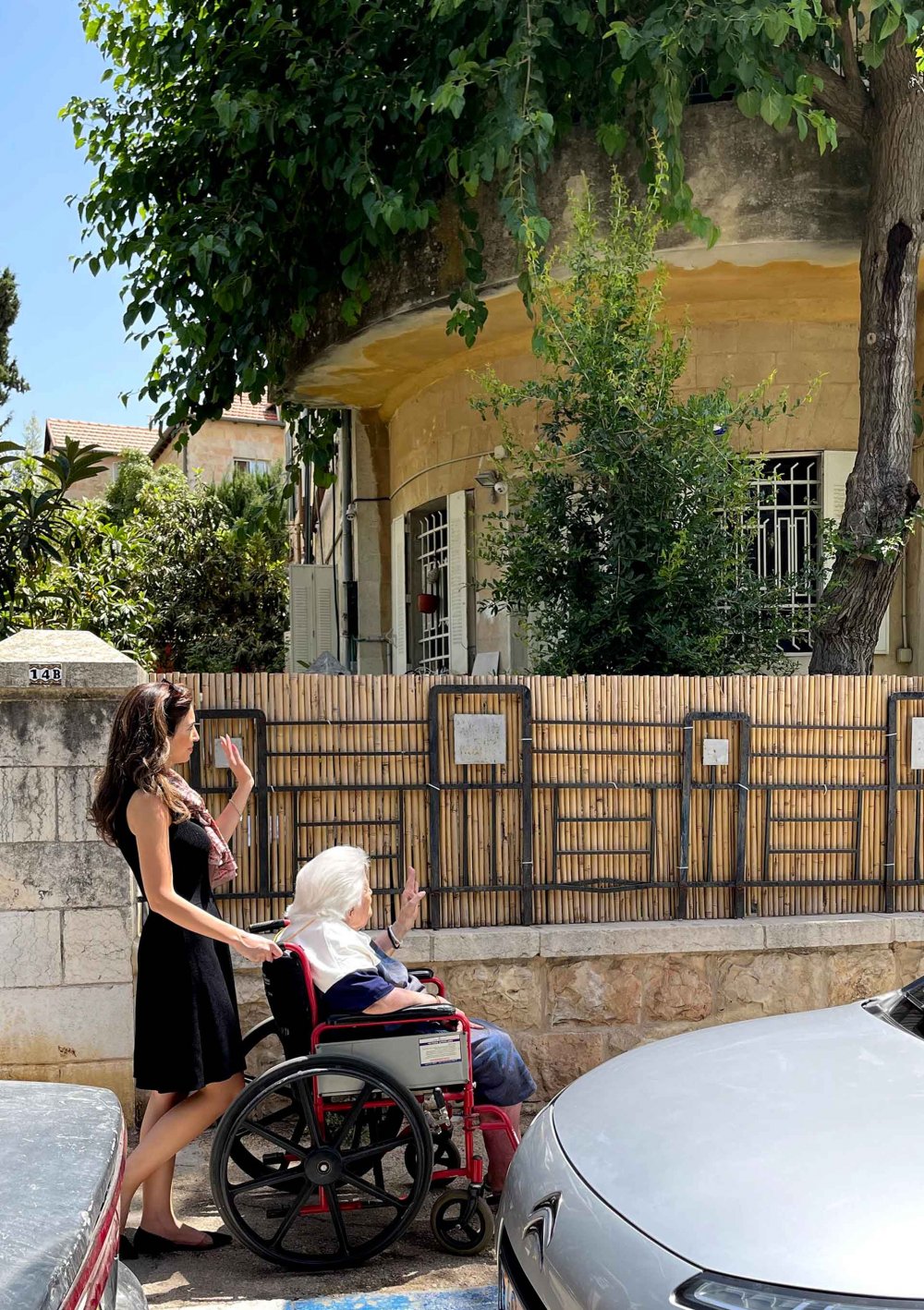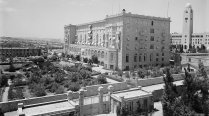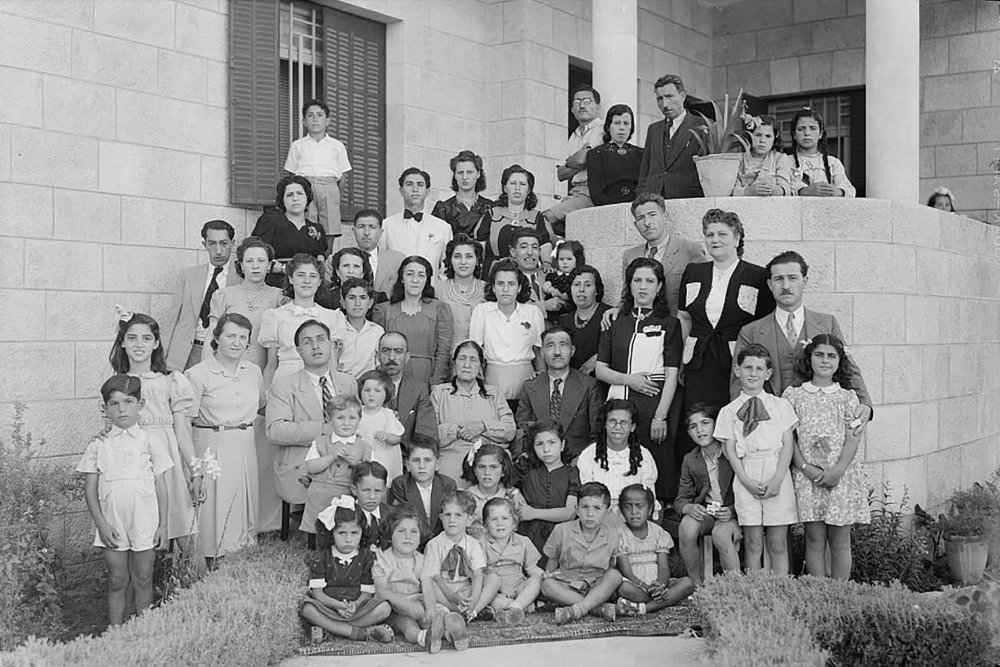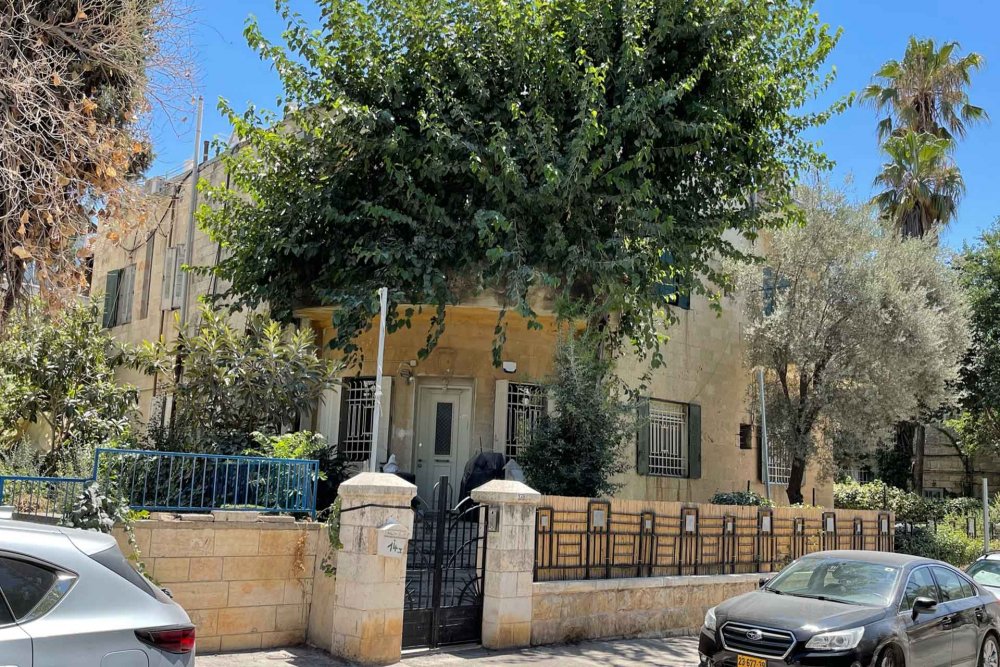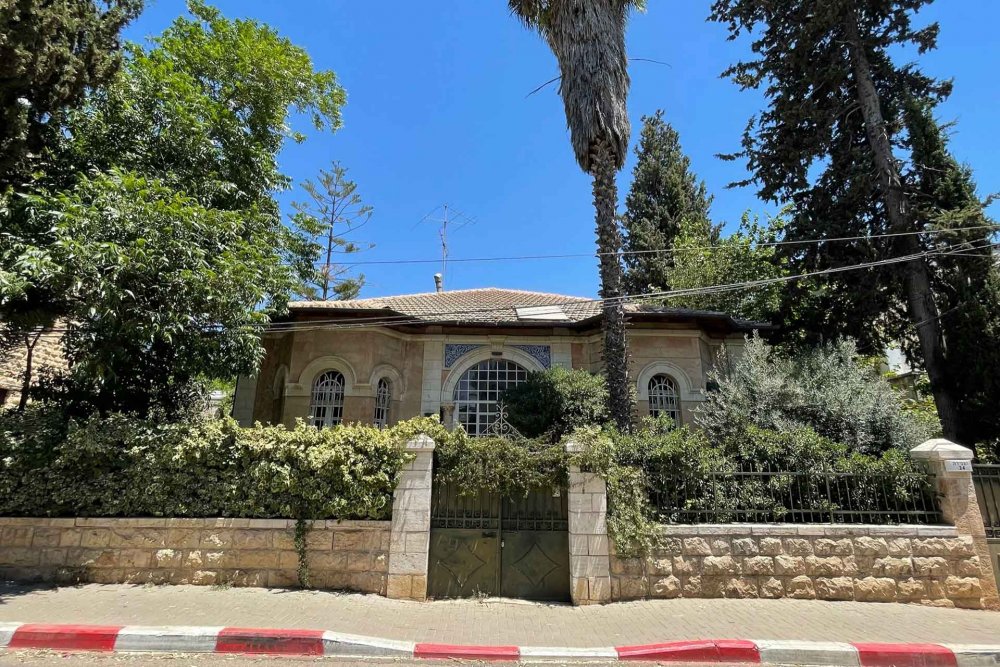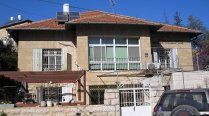Today, I visited our stolen house in the southern Baq’a area, in the western part of Jerusalem, the former Dajani neighborhood. A lifetime of beautiful memories hit me with a force that took my breath away. Standing on the doorstep of the home that witnessed my birth in 1930, I ran my fingers along its iron gate in an attempt to unlock it, when suddenly I realized that I was not allowed to enter. Those who occupied Palestinian houses cannot bear to see the original owners. Nevertheless, this moment of heartwarming nostalgia enkindled within me a sense of safety, security, and serenity, even though a large part of my childhood and early youth was spent under the domineering rule of the British Mandate. What saddens me most is that the name of the road that goes through this beautiful neighborhood has been changed to Hespira Street, as indicated by the sign affixed to the front of our old house.
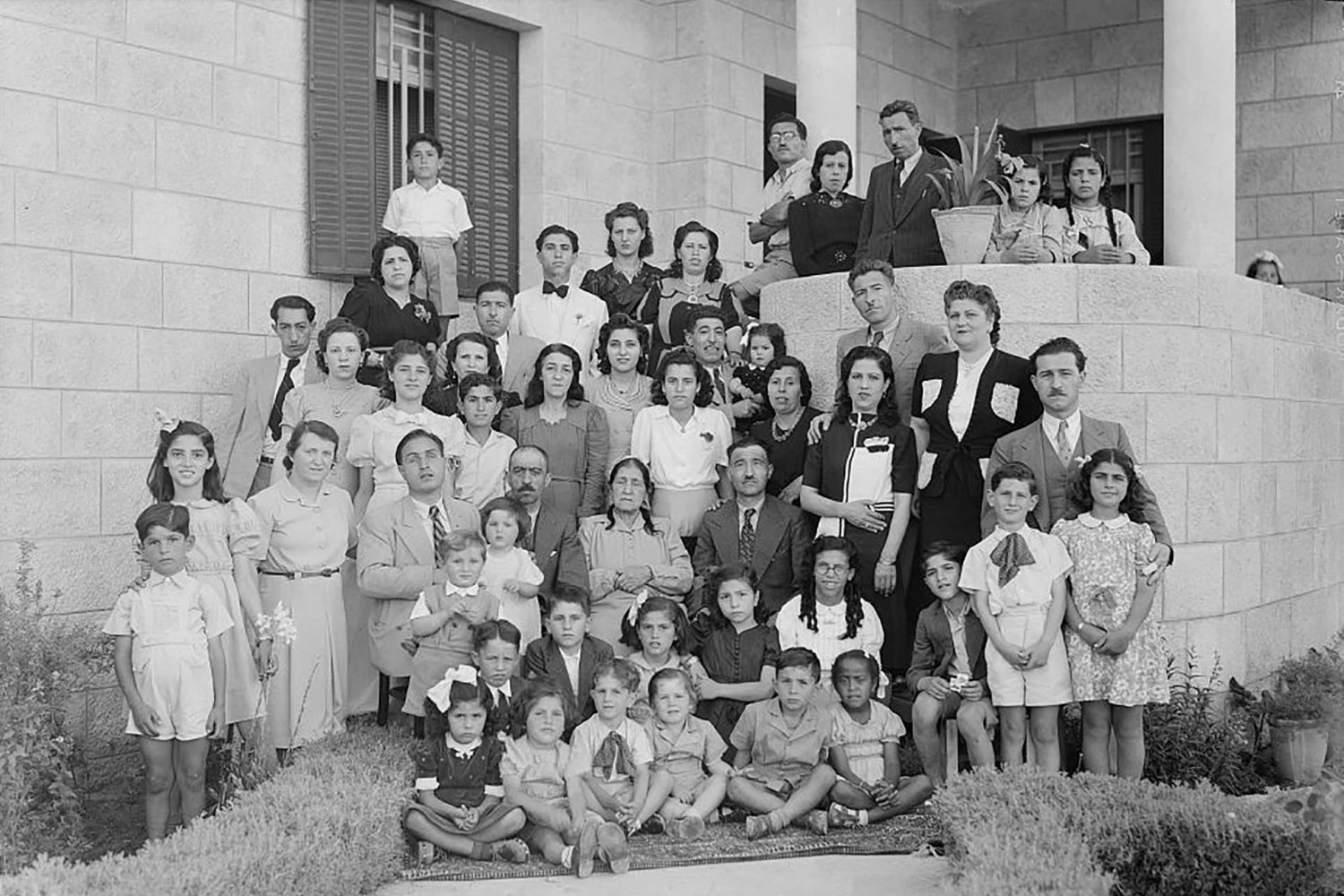
Credit:
Library of Congress, Prints and Photographs Division [LC-DIG-matpc-14651]
Falling Leaves Turn Back to Their Roots
Snapshot
Abla Mohammad Taher Dajani Daoudi was born in December 1930 in Lower Baq‘a and schooled at Schmidt’s Girls College. In 1948, the family sought refuge in Egypt for three years before returning to the Old City. In May 1953, she married Aref Hassan Kleibo. She outlived her daughter, Narmin Hindiyeh, and has four sons, Hassan, Jamal, Mounir, and Mahdi.
Abla is a very well-informed and avid reader; she loves photography, is a former herbal healer, and most of all, a supporter of women’s rights. This article was written with the assistance of her son, Mounir Kleibo, who is currently the Special Representative of the ILO Office in Jerusalem; it was translated from Arabic by Mary Shehadeh Khoury. It was first published in This Week in Palestine, no. 280 (August 2021), and is reproduced here verbatim by permission from the publisher.
Here I am, older and frail, vividly recalling that day when I had borrowed Adel’s bike. Adel happens to be my cousin on both the paternal and maternal sides of my family. He was the son of my uncle Ahmad Daoud Taher Al-Dajani and my aunt Balqis, the daughter of Abdullah Bek Al-Alami. Adel was on his way back from school when I asked him to take a photo of me with the Kodak camera that my oldest brother Sulaiman gave me upon his return from a visit to Britain that very week in 1948.
The 1940s were fraught with danger. Zionist gangs began to surface, committing heinous acts of terrorism with the full support of the British Mandate army. But even though the increasing influx of Jewish immigrants to Palestine presented a great challenge to Palestinians, the situation in our neighborhood in the western part of Jerusalem was still bearable. Rather than feeling the danger posed by Jewish immigrants, we formed friendships and partnerships, shared business interests and mutual relations, and were content with what felt like genuine coexistence. We shopped on Jaffa Street where most of the Jewish community lived, bought imported fine clothes from authorized Jewish agents, went to European bakeries, and frequented renowned cinemas, such as the Rex and the Rivoli in western Jerusalem. Oh, how we enjoyed the concerts of Umm Kulthum, Farid al-Atrash, and Asmahan that were performed at the King David Hotel.
My father had eight brothers. He was a distinguished and affluent merchant who had inherited acumen, wisdom, intelligence, and savviness from his father, Taher Dawood Al-Dajani (who was close to the Ottoman sultan at the time). He excelled in free trade, acquiring commercial representation of several agencies. He also built houses to accommodate the Dajani family and other Jerusalemite families living in al-Baq’a, gaining the nickname “the holder of 55 keys.” He was among the first to instigate work on the reconstruction of al-Baq’a neighborhood in the early nineteenth century. After my grandfather’s passing in 1925, my father followed in his footsteps, further prospering to become a well-known and influential figure. The family’s properties and interests during the time of my father stretched to Jaffa Gate; he built the commercial complex Daoudi Trade Agency, which was distinguished from other commercial enterprises due to its massive size and wide variety of imported and fine local commodities.
The situation in al-Baq’a was fairly acceptable until November 29, 1947. On that day the UN General Assembly announced a discriminatory resolution to divide the land of Palestine between Palestinians and Zionist Jews. August 1, 1948 was selected as the end of the British Mandate. Consequently, the State of Israel, with British and international support, occupied two-thirds of the historical land of Palestine. Arab resistance was virtually absent. Jordan, then represented by King Abdallah Ibn Al-Hussein, entered into an interim truce to maintain the security and safety of both Palestinians and Zionist Jews during this transitional period.
But tensions were at their peak: Palestinians rejected the unjust and biased resolution that divided their land and gave it away as a gift. Furthermore, the Palestinian resistance expanded, and confrontations raged between the Arabs and Zionist Jews. Zionist gangs began to execute their fanatic plots and aggressive criminal acts against Palestinians; they committed all sorts of crimes: robberies, killings, booby-trappings, displacement, and massacres, such as in Deir Yassin, killing Palestinians in their villages or deliberately harassing them just for the sake of humiliation, intimidation, and displacement. In addition, they perpetrated the arson of land and blew up hotels, such as the King David and Semiramis hotels. It was then that the feeling of imminent danger started to creep into our hearts, let alone our souls.
The number of British military checkpoints throughout Palestine doubled, separating neighborhoods and creating sealed military zones, while curfews were imposed in many areas, including in western Jerusalem which was divided into four zones. The Mandate regime required us to obtain permits to move around. They were classified by color, allowing the British soldiers to easily distinguish between residents in their respective locations; yellow, for instance, was the color of the southern Baq’a permits.
These conditions became pervasive. British soldiers accompanied Jewish gangs that roamed various areas in an attempt to control the situation, mitigate confrontations, facilitate Jewish succession to power, combat the revolutionaries and resistance fighters, and suppress the active role of Palestinian youth. At the same time, means of mobility and livelihood became very restricted. Armed confrontations arose in our neighborhoods, schools were closed, and people were living in constant fear. The Palestinian resistance movement was suppressed by the Mandate forces through imprisoning activists, executing many of them in the Russian Compound Interrogation Center and Prison (Al-Moscobiyeh) at Jaffa Gate, near the Citadel of Salah Eddin Al-Ayoubi.
After the bitter experience of World War II, people were struck with terror; they frantically began to stock their homes for fear of a third world war. Scarcity prevailed, people reverted to the tradition of purchasing their supplies using food coupons to secure their basic needs from the British regime, as had been the case during World War I, where a points system to obtain supplies had been established based on the number of family members. Prolonged power and water outages were a frequent occurrence.
People began to reinforce their houses and encircled them with barbed wire to counter terrorist attacks. Neighborhood voices cried out for the need to be armed and confront the heavily armed Jewish and Zionists gangs that were supported by the sophisticated British military and its arms, ammunition, armored vehicles, military vehicles, and camps. Palestinians were striving to collect money to buy simple rifles, and they felt abandoned. When the war broke out, Arab armies did not manage to reach Jerusalem due to lack of equipment, training, and familiarity with the topography of Palestine. All this did not contribute to protecting and salvaging Jerusalem.
My father was very unhappy with the ongoing developments. He had been an avid traveler who had spent most of his time far from the daily routine in al-Baq’a. Thus, he and his brothers decided that the whole family should move and take refuge in Egypt to protect his children and our sick mother who required special care. At the time, my father had a grant-lease contract to cater meals for the airport’s canteen, including those served on board. One early morning, special arrangements were made for us to flee the neighborhood in hope of returning a few days later, when things would have calmed down and the situation stabilized. Our way to Lod Airport was safeguarded, and coordination had been made with the airport administration to book seats on a plane. British soldiers and a Jordanian tank accompanied us to make sure our trip to the airport was uneventful. We left our neighborhood in private cars, crossed the checkpoint in the Montefiori area, feeling safe in the presence of the Jordanian military soldiers we called “The Red Strap Army,” who were originally Jordanian Bedouins who accompanied the Royal Jordanian entourage and part of the armistice crews.
Our trip to Egypt ended up being much longer than anticipated. In Cairo, we lived on Murad Street for three long years. My father did not join us in Cairo. Instead he decided to stay in Jerusalem at his Imperial Hotel at Bab al-Khalil to accommodate the foreign delegations that stayed at the hotel and also to protect the family’s properties in the Old City. Through the Belgian ambassador my father managed to get a permit to visit al-Baq’a one week after we left. Once there, the Iraqi family that occupied our house told him that the house was left open. All furniture and family belongings had been stolen, including the jewelry that my mom hid in the window shutters. The only things that survived the robbery were the family albums that I cherish till this day. My father was very saddened by the fact that his Daoudi Agency was also robbed, including the British-made safe where he kept most of his official papers and family documents. In the winter of 1951, we all returned and stayed in family houses dispersed within the walls of the marketplace in the Aftimos neighborhood in the Old City.
The days and years passed. We also lived through the crisis of the Naksa during the 1967 War, when Israel occupied the rest of the land of historical Palestine, including East Jerusalem. Displacement continued, but our first migration had taught us never to leave our homeland again, under any circumstance. I visited our stolen house in al-Baq’a as soon as the opportunity arose. Movement was restricted, yet two weeks after the war, I managed to go to al-Baq’a with my husband and his brother in a car that was smeared with the traces of war. We headed to al-Baq’a via Jaffa Street, bringing to full circle the suffering that our people have endured, and saw with our own eyes our house, inhabited by the occupiers who had stolen it and raised their flag at its entrance. What I felt in these moments cannot be described. The wounds that are engraved on our hearts can never be healed.
Since that agonizing trip 54 years ago, I have never stopped visiting our house and the neighborhood of our cherished childhood, just for the sake of re-experiencing its spirit and reliving the memories—and, most important, to pass on these treasured memories to my children and grandchildren so that they never forget or give up.

